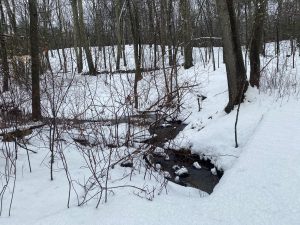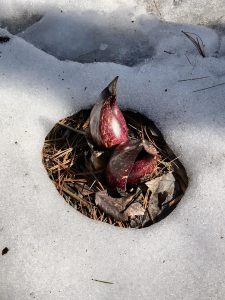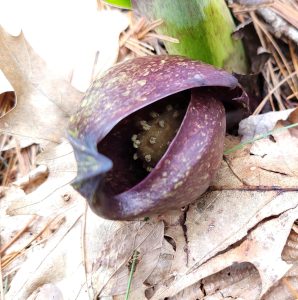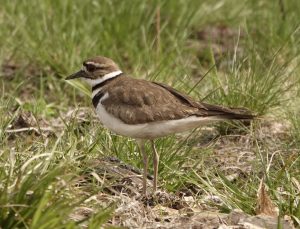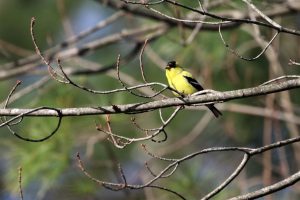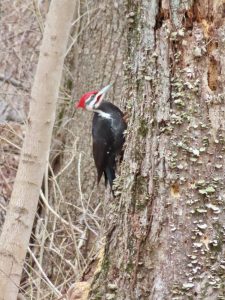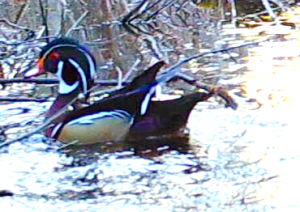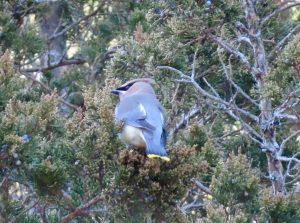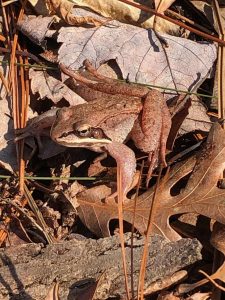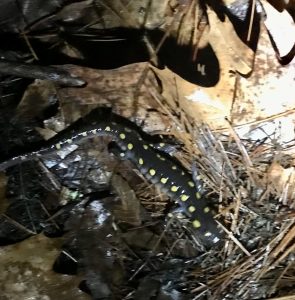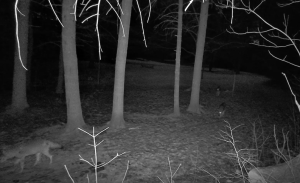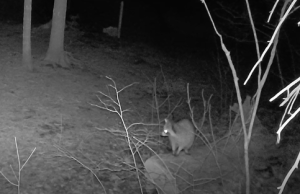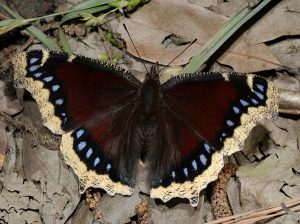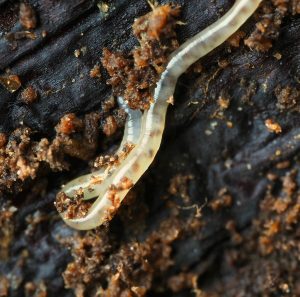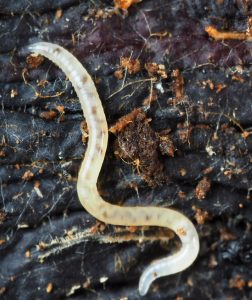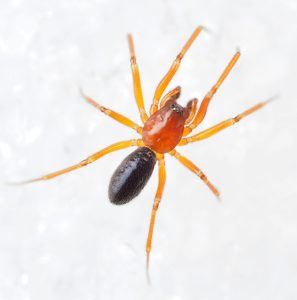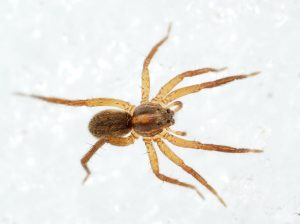Written by Gwyn Loud for the Lincoln Land Conservation Trust. She welcomes your sightings and questions at 781-259-8690 or gwynloud555@gmail.com
Spring will not arrive until the vernal equinox on March 20, but spring is already in the air, with the sun higher each day, the hours of daylight longer, birds singing, and buds swelling. Crocuses were blooming on March 10, and my daffodils are pushing up green shoots. Willows are yellowing and soon the beautiful flowers of red maples will give a reddish cast to the wooded landscape. Although maples are primarily wind-pollinated, bees are also attracted to the flowers for early nectar and pollen. After very little snow all winter, we finally had a couple of inches of heavy wet snow early this month. A lot turned to slush, followed by lingering patches of icy snow in spots which do not get much sun. Then, a late nor’easter came through on March 13-15, giving us a lot of rain and several inches of heavy wet snow.
The impacts of climate change on our winter weather and the effects on plants and animals were explored in a recent program on WBUR (see link below to listen to the complete program). Quoting the article, “So far, this is the fifth warmest winter on record for Boston — with average temps at 36.7 degrees — compared to normal winter average temps which are below freezing….. this year’s warm winter could be the new norm.” The lack of snow accumulation is of particular concern. “The lack of snow cover is a problem for flora and fauna that have adapted to freezing winters over millennia. Take trees, for example, which can have sensitive root systems close to the ground. Without snow cover, the roots can be damaged by freezing and thawing that would be less likely with an insulating blanket of snow,” said Andy Finton, an ecologist who specializes in trees at the Nature Conservancy. Tia Pinney, a staff biologist at Drumlin Farm, was also interviewed, and she spoke about how small mammals such as voles, mice, and moles depend upon a blanket of snow as protection against both cold and predators.
A common plant with amazing adaptations to temperature is skunk cabbage, now visible showing its maroon spathe (protecting the flower) in wetlands and shallow slow-moving streams. As I wrote a year ago, skunk cabbage is among a small group of plants which produce their own warm mini-climate in a process called thermogenesis. In this process, skunk cabbage increases its intake of oxygen and rapidly burns starch from its massive underground root system, thus creating heat, which it maintains at a steady 72℉, no matter what the outside temperature is. The pollen in the flower provides early food for honeybees, and insects such as carrion beetles, flesh flies, and blowflies are attracted to the skunk cabbage’s fetid carrion-like odor, which is intensified by the plant’s warmth. Several species of spiders then prey upon these insects- a whole food chain happening in a small warm space.
Birds migrating from points south are gradually arriving, and each week brings newcomers, especially when warm winds from the south help them on their journey north. Observers have seen killdeer in various fields, turkey vultures soaring overhead, and mixed flocks of common grackles, red-winged blackbirds and brown-headed cowbirds. Some robins have been here all winter, but when we see a field or lawn with many robins, those are migrants, hoping to find unfrozen earth in which to find food. A very early catbird turned up by a house on Woods End Rd. and tree swallows were swooping across the Sudbury River. Wood ducks are back, and will be looking for trees in which to nest, as they are cavity nesters. American woodcocks have just returned; these stocky, brown and secretive birds are more likely to be heard than seen. Half an hour after sundown, visit a wet meadow and listen for a nasal peent call, followed by a high twittering overhead. The male bobs in circles on the ground, peenting, then takes to the air, circling and making the twittering sound with his wings before making fast chirps as he plummets down to the same spot and performs all over again. Hopefully a female will be enticed!
Over the next month we shall hear the first Eastern phoebes as well as pine warblers, the earliest of the wood warblers to return. Male birds of all species will be singing to attract mates and claim territories. If American goldfinches are coming to your feeders, you can watch the males molting feather by feather from their drab olive winter plumage to the striking black and yellow of their breeding finery. Other recent bird sightings of note include a couple of red-breasted nuthatches, brown creepers singing, a red-shouldered hawk calling near Conant Rd., and pileated woodpeckers in many parts of town. At Drumlin Farm three hooded mergansers were on the Poultry Pond and the Eastern Meadowlark was still in Boyce field. About a dozen mute swans come and go on Farrar Pond. Cedar waxwings have been scarce this winter, so I was happy to have my neighbor report a small flock of waxwings eating juniper berries. Barred owls and screech owls start nests in March, as does the mourning dove, which mates for life. A local birder reports that her first Eastern bluebird nest usually occurs about March 10. Near a house on Trapelo Rd, when sap was weeping from a maple tree, the homeowners noticed a chickadee, nuthatch, wren, and a woodpecker all exploring the tree where the sap was on the trunk. A gray squirrel, apparently with a sweet tooth, was licking the wet area. The dried sap, due to evaporation is now 55% percent sugar.
Amphibians such as wood frogs, spring peepers, and spotted salamanders are waiting for the right conditions to hop and crawl from the woods to a nearby vernal pool to lay eggs. This could happen any night now when it is raining after dark and the temperature is about 40℉ or warmer. Sometimes the amphibian migration occurs on a “big night”, when conditions are perfect, but the migrations may also be spread over several nights; this year there was a small one on March 13, with more to come, for sure. Migration locations are well-known on several roads in town but amphibians could be on any roads on any wet night, so drivers, please watch for them and drive slowly. A couple of days after wood frogs reach their vernal pool, sounding like quacking ducks, they begin croaking to attract mates, and the tiny spring peepers will start chorusing. The Conservation Department welcomes volunteers to record amphibian migration sightings; please check link below if you would like to participate.
Many of our local mammals are either courting mates in March or bearing young. Mary Holland writes as follows about chipmunks, “ In early spring male chipmunks emerge from their tunnels, and seek out a breeding partner. When a female in heat is located, males tend to congregate in her territory and indicate their readiness to mate by flicking their tail up and down. A frenzied chase ensues…When the dominant male catches up with the female, breeding takes place. Timing is everything, as the female is receptive for a total of only six-and-a-half hours.”
This month insects are also more noticeable. Mourning cloak butterflies, so-named because their velvety brown wings look like cloaks once worn by mourners, have over-wintered as adults and may be seen on a mild day, sometimes drinking sap from injured branches. Tiny ants appeared by my kitchen sink on March 12, another sign of spring.
Norman Levey, paying attention to the smallest wildlife, recently photographed potworms and wrote, “ Potworms, unlike their larger brown and red common earthworm cousins, look like fine white threads and need extreme magnification to see how earthworm-like their translucent bodies are, so translucent that we can observe food particles passing through their bodies. Potworms are nature’s recyclers and composters. The subjects in the photographs are consuming small particles of rotted wood from a decaying log which harbors nutritious bacteria and fungi. These worms thrive in acidic conditions where red worms and others cannot. “
Finally, a reminder about ticks: please continue to check for them, as they usually survive the winter and young nymphs will soon emerge.
Pertinent links
To hear more about climate change affecting New England winters
To watch/hear Mike Callahan speak about Beaver Ecology and Management
To sign up to participate in observing amphibians when they migrate
To read about squirrels tapping maples for sap (with permission)
Trail Camera Footage of Coyote Pack (LLCT)
Trail Camera Footage of Raccoon (LLCT)
Wildlife Camera Footage of Woodcock (Carol Roede)


